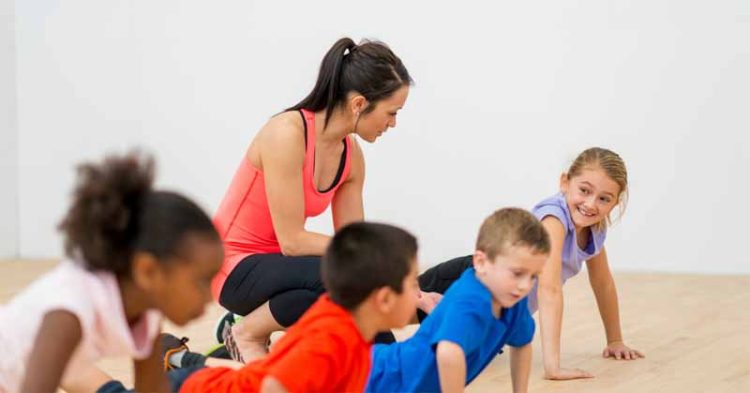
If you’re looking for an indoor gym for your kids, there are several options available. Some options include: Trampolines, Gymnastics rings, and Trapeze bars. If you’re not sure what to look for, consider jumping ropes and other attachments that are good for kids’ balance and coordination. Many indoor gyms include pull-up bars and other options. You can also install a pull-up bar in the doorway.
Trampolines
Trampolines have been used for training since ancient times. Gymnasts, tumblers, and astronauts all used trampolines. Children love to jump and fly through the air. If your child is trapped in an earthquake, a fire, or pandemic, they’ll need a way to burn off their energy. Using an indoor trampoline may just save their lives. Though they can’t perform acrobatics on them, kids will enjoy the feeling of weightlessness and flying through the air.
Besides promoting health and fitness, trampolines also have other benefits. Jumping develops core strength, which is important for kids who sit in class. Additionally, jumping helps improve motor skills, which are essential for many activities in the classroom. Kids will also enjoy the benefits of increased blood flow to their brain, which improves their concentration and memory. All these benefits will make it hard to resist an indoor gym for kids with trampolines.
Although trampolines are a great way for kids to get exercise, they can pose a risk if children are not supervised. Indoor trampolines can cause injuries, especially for younger kids, so they must be supervised. It’s a good idea to wait until your child is older before buying an indoor gym for kids with trampolines for children. You can also make use of indoor trampolines with handles, which can be safer for younger kids.
Gymnastics rings
Children will benefit from gymnastics by improving their cognitive function. Regular exercises stimulate the brain and help develop positive attitudes about growing bodies. During exam periods, children are especially prone to stress. Regular exercises, such as gymnastics, can help them refocus on their studies. Children who practice gymnastics have increased concentration and a longer memory. Children can also learn to perform various tricks and feats while focusing on their studies.
Unlike traditional gym equipment, gymnastics rings are easily adjustable for different heights. Kids will have hours of free entertainment and develop their co-ordination while they are exercising. Kids will begin with a simple no-tricks routine but soon learn to sway back and forth and spin on one foot. In addition to increasing body strength, gymnastics rings develop coordination. Kids love to pretend that they’re famous circus performers, which makes the activity even more fun.
In addition to their versatility, gymnastic rings are affordable for families with small children. The Rogue Kids Wooden Rings are 1.10″ thick, allowing even smaller hands to grasp them with ease. They’re sturdy and safe, and come with two Rogue straps for extra security. Kids can easily attach their rings to the door frame or the top of a bathroom for added flexibility. The versatility of these rings makes them a valuable addition to your gymnastics equipment collection.
Trapeze bars
A home indoor gym for kids with trapeze bars is a great way to encourage physical and sensory development in children. By training muscles and developing dexterity, a child can develop gross motor skills, a critical skill for later life. Moreover, a child’s sense of balance and body awareness will improve as he or she plays on the trapeze. Moreover, a child can boost his or her self-esteem by improving his or her physical fitness levels.
A ring trapeze bar combo adds a new dimension to swinging. It helps improve gross motor skills and physical condition in children, and it can also develop core strength. A strong core is essential for a child in many aspects of life, including playing sport and everyday life. A kid’s core should be strong and well-developed for a lifetime of enjoyment. This is why an indoor gym for kids with trapeze bars is an excellent investment.
Jump ropes
Jump ropes are a fun way to exercise your child. They can be used for games like counting skips, playing chants, and much more. One way to incorporate learning is to play games with jump ropes, like the famous Jump Rope For Kids game. For this activity, you will need a long rope, sidewalk chalk, and a few kids. To get started, mark out a big circle, about twice the length of the rope. Mark a spot around the circle.
Jump rope games can be as simple as jumping, a favorite game for siblings, or as competitive as a family team. Jumping rope games will keep your child active while you work out or watch television, or simply a quiet time to unwind. Jump ropes are great ways to get your kids outside, whether it is raining or snowing. Just make sure that you choose a rope that is durable enough for several children to play with.
A good jumping rope for a child is one with long handles. The longer the rope, the easier it is for your child to manage. Jump ropes that are too short can cause tripping. Also, a long jump rope is safer for older children, as it allows them to learn proper timing when jumping. The handles of jump ropes can be checked for length by pulling them up and checking for a proper clearance over the child’s head.
Animals walks
Children benefit from animal walks. Animal walks develop core strength, agility and balance, while increasing balance and regulating sensory systems. They also improve motor planning skills, a skill that helps kids with learning to follow directions and regulate their own body movements. They can also practice timing and sequencing when following directions and will eventually help them master complex academic directions. Whether it’s the challenge of climbing or flapping their arms, children can learn to follow directions using animal walks.
The benefits of animal walks are many. The physical activity helps children develop their brains and improves their attention. These activities also improve their concentration, focus, memory, and planning skills. They have been shown to positively impact academic achievement and test scores of children. Whether used as a physical activity or as an engaging lesson for children in school, animal walks are a great way to incorporate exercise and learning. They can be used to teach a child math, science, and language skills.
A child’s imagination is essential in developing balance, and animal walks can be a fun way to do this. Young children can create their own animal walk using their imaginations, but parents may need to encourage them to do so. Aside from being fun, an animal walk helps your child improve their attention span and balance, as well as develop their physical development. A family can spend time together on these walks together, and you can bond over the experience.
Climbing walls
Indoor climbing walls for kids can be a great way to keep kids active, while at the same time teaching them a valuable life lesson. They should be installed in an area eight feet square or bigger, and a second adult should be present to spot check younger children until they get the hang of it. If your child is a fan of swing sets, a climbing wall is the perfect addition to one. It’s safe, easy to maintain, and provides an excellent workout.
A homemade climbing wall is a great way to incorporate an indoor climbing wall into your home, but if you want to go all out, you can invest in a professionally built indoor rock climbing wall. If you don’t have a lot of money to spend, you can use plywood or other recycled materials to build the structure yourself. However, older kids may not appreciate the look of a traditional climbing wall. To avoid this problem, you can purchase a contemporary climbing wall made of molded plastic, which is more likely to withstand the punishment of climbing.
When building a vertical climbing wall for your child, make sure to mark the holes where holds will be placed. You can use a pegboard to help you space the holds correctly. You can use the pegboard as a template, and the pegboard will help you line up the holes. Just remember to pay attention to how the holds are positioned and make sure the climbing wall has no dead ends! While making an indoor climbing wall for your child, you can add a few more holds to increase the challenge level.

















